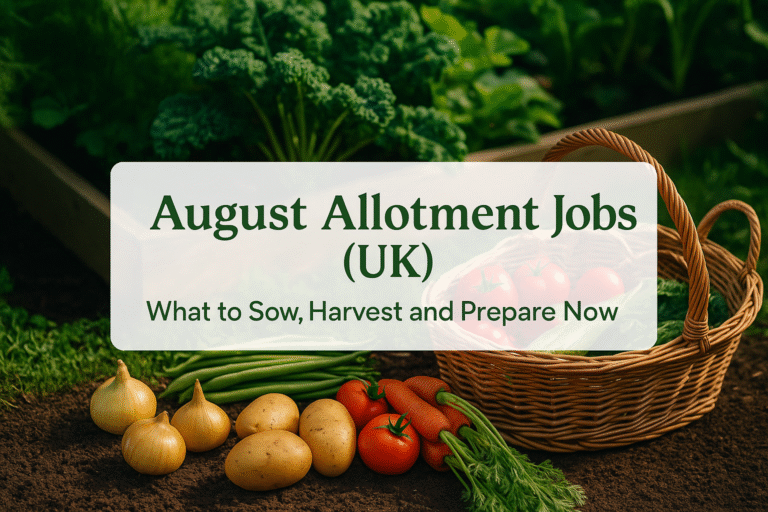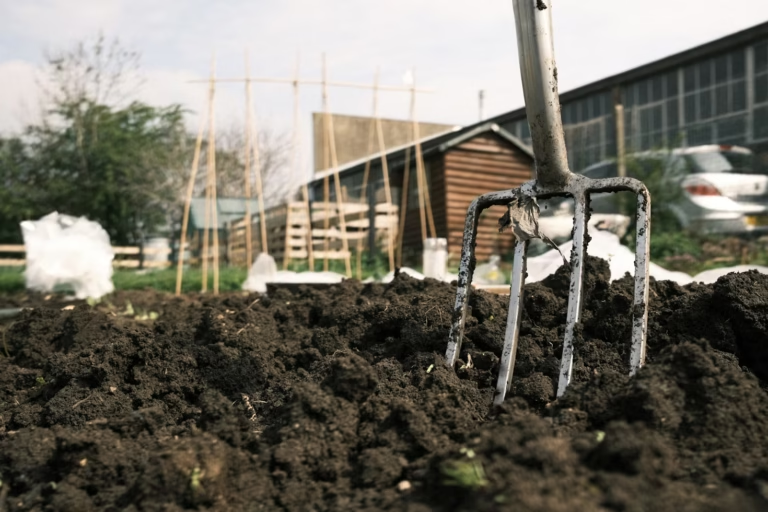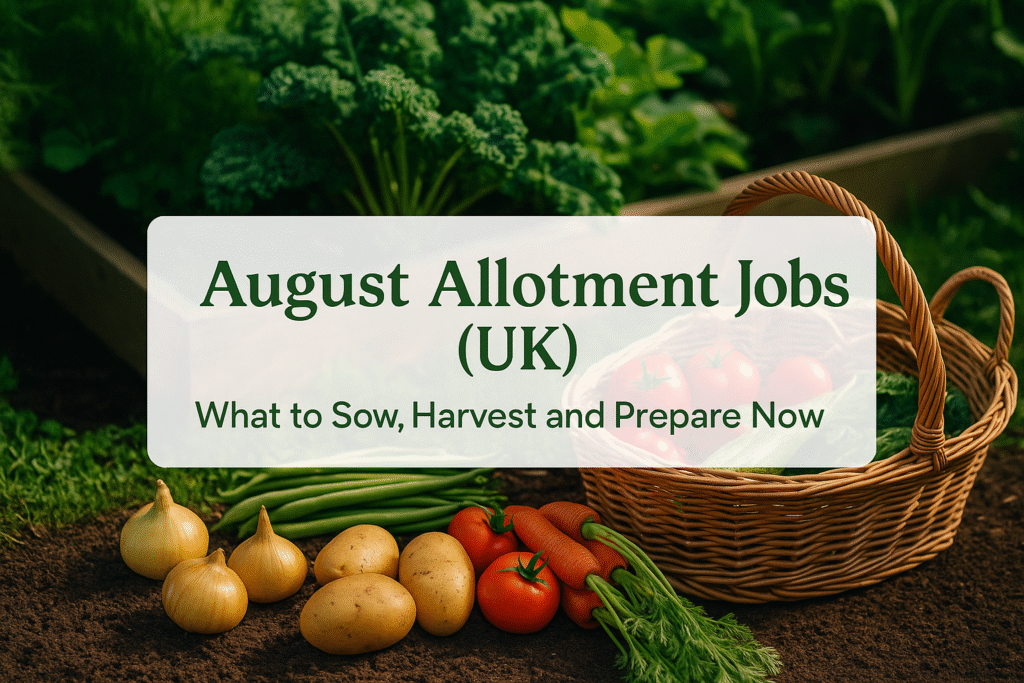
Some of the links in this post may be affiliate links. If you decide to buy through them, it helps us grow Sprout Share.
Thank you for your support.
Keywords: august allotment jobs, sow in august UK, harvest in august, allotment tasks, allotment prep
August is the turning point in the allotment calendar. Your courgette plants are bursting with fruit, tomatoes are ripening on the vine, and every trip to the plot sends you home with trugs full of produce. But it’s not just a time for celebration – it’s also when wise growers start planning ahead. Whether you’re just beginning or years into your gardening journey, these August allotment Jobs will help set the tone for the seasons ahead.
This guide walks you through each task with plain language, thoughtful advice, and useful resources.
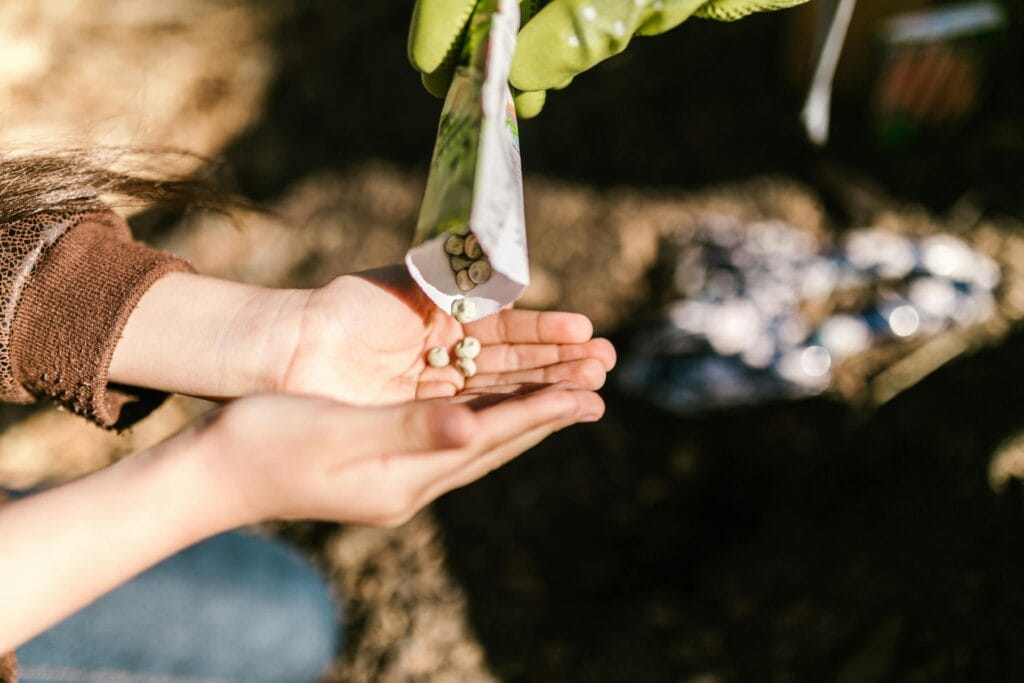
What to Sow in August (Yes, You Still Can!)
You might think it’s too late in the year to plant anything new – but August is surprisingly generous. There’s still time to grow a final wave of quick crops, while also sowing the first seeds for autumn and even next spring.
Let’s break it down:
Fast Crops to Sow Now
These are the speedy growers. Sown early in August, they’ll be ready before first frosts.
Radish – Germinates in days and is ready in 3–4 weeks. Ideal for filling gaps.
Lettuce – Choose varieties like ‘Little Gem’ or ‘Winter Density’. Sow little and often.
Pak Choi & Mizuna – Excellent for salads and stir fries. These Asian greens are frost-tolerant.
Spinach – Best sown now before cooler temps. Use a bolt-resistant type like ‘Medania’.
Spring Onions – Reliable varieties like ‘White Lisbon’ can overwinter and harvest in spring.
Get your seeds sorted with a seasonal seed pack – ideal for late summer sowing.
Planning Ahead: Autumn & Beyond
August is a good time to look beyond this season too. These crops take longer but are worth it.
Spring Cabbage – Sow now to transplant in September. It’ll mature in early spring.
Corn Salad (Lamb’s Lettuce) – Slow growing but survives cold weather. Great for winter salads.
Green Manures – Not a crop to eat, but an important one. These are plants like mustard or phacelia sown to cover bare soil. They improve structure, reduce weeds, and can be dug in later for nutrients.
What is overwintering?
Overwintering means planting something now that will live through winter and be ready to harvest next spring. It’s how experienced growers make use of every season.
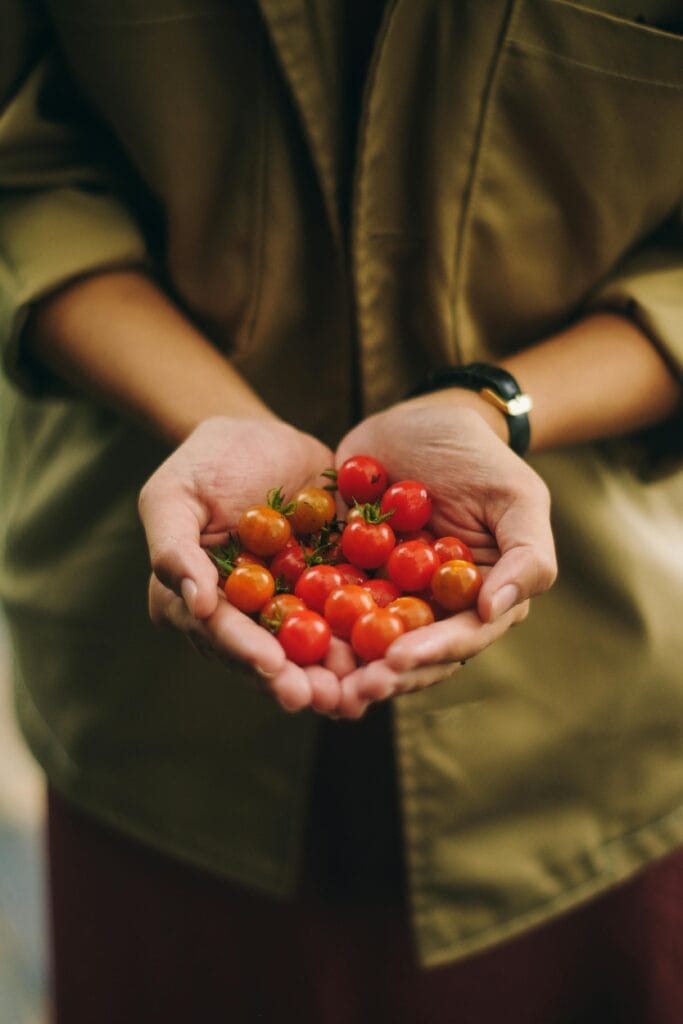
August Allotment Jobs: What to Harvest
If you’re growing food for the first time, August is when everything starts to feel real. Tomatoes, courgettes, and runner beans all seem to ripen at once. It’s exciting – and sometimes overwhelming.
Likely Ready to Pick:
Tomatoes – Pick them as they colour. Overripe fruits split in the rain.
Courgettes – Harvest when small (6–8 inches) for best flavour. Left too long, they turn into marrows.
French & Runner Beans – Pick daily. This encourages more flowers and a longer crop.
Beetroot & Carrots – Pull when young for sweetness or leave to bulk up.
Sweetcorn – Ready when tassels brown and kernels ooze milky sap.
Potatoes (maincrop) – Ready once the plant tops die back.
Garlic & Onions – If lifted in July, they should now be curing in a dry space.
Use a harvesting trug with colander to carry your haul; mud, roots, and all.
Soft Fruits:
Raspberries & Blackberries – Great for freezing.
Plums & Early Apples – Twist gently. If they fall into your hand, they’re ready.
Preserving the Glut
Even a modest plot can produce more than you can eat in August. That’s where preserving comes in. It’s not just about filling jars – it’s about reducing waste and stocking your pantry with flavours of the season.
Easy Ways to Store Your Harvest:
Freezing: Beans, courgettes (grated), spinach, and raspberries all freeze well.
Pickling: Beetroot, cucumber, and onions can be quickly pickled with vinegar, sugar, and spice.
Chutneys & Jams: A classic way to use plums, apples, tomatoes or green tomatoes.
Herbs: Chop and freeze in olive oil cubes or hang in bundles to dry.
Checkout Garden Organic’s preserving guide for more.
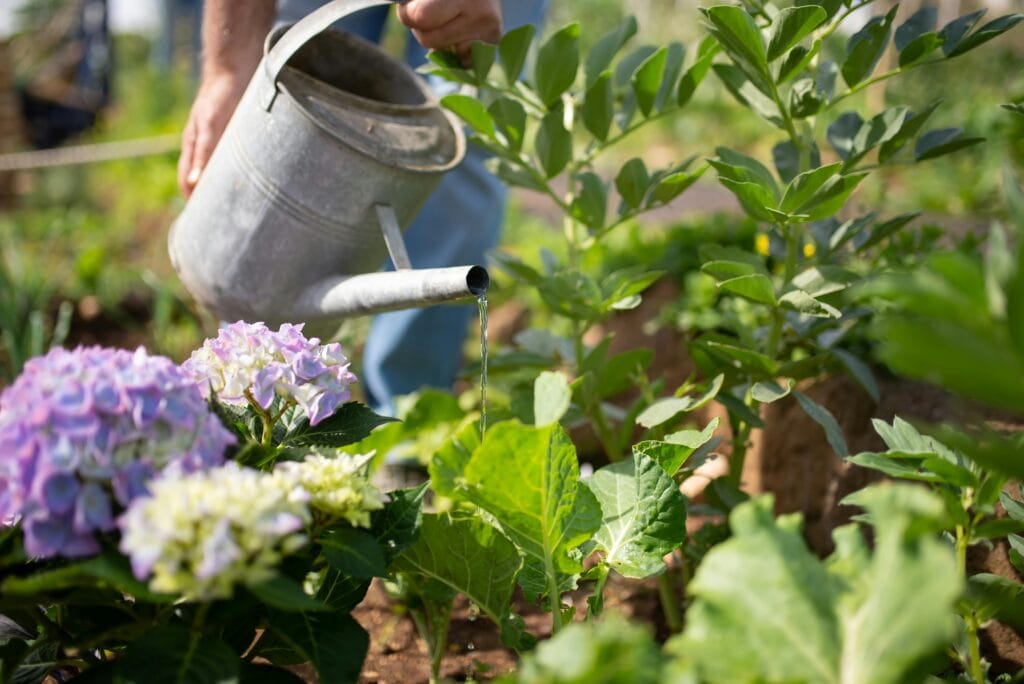
Plot Maintenance: Small Efforts, Big Impact
While it’s tempting to just pick and run, a bit of maintenance now saves hours later.
Watering
Deep, infrequent watering is best. Aim for the roots, not just the surface.
Early mornings or evenings help reduce evaporation.
This Bronze Spray Nozzle saves time and water while targeting roots directly.
Weeding:
Keep on top of bindweed, couch grass, and chickweed.
Mulch paths and gaps to suppress new growth.
Feeding:
Tomatoes, squash, peppers and cucumbers still need high potash feed.
Use homemade comfrey tea or store-bought tomato feed.
This liquid feed is organic and perfect for fruiting crops.
Mulching:
Mulch bare soil with straw, compost or grass clippings to suppress weeds and retain moisture.
Bulk straw mulch is a low-cost, high-reward solution.
Pruning:
Summer prune apple and pear trees.
Cut back herbs like mint and oregano to encourage fresh regrowth.
Compost:
Turn compost now while it’s warm.
Alternate wet greens (kitchen scraps, leaves) with dry browns (shredded paper, straw).
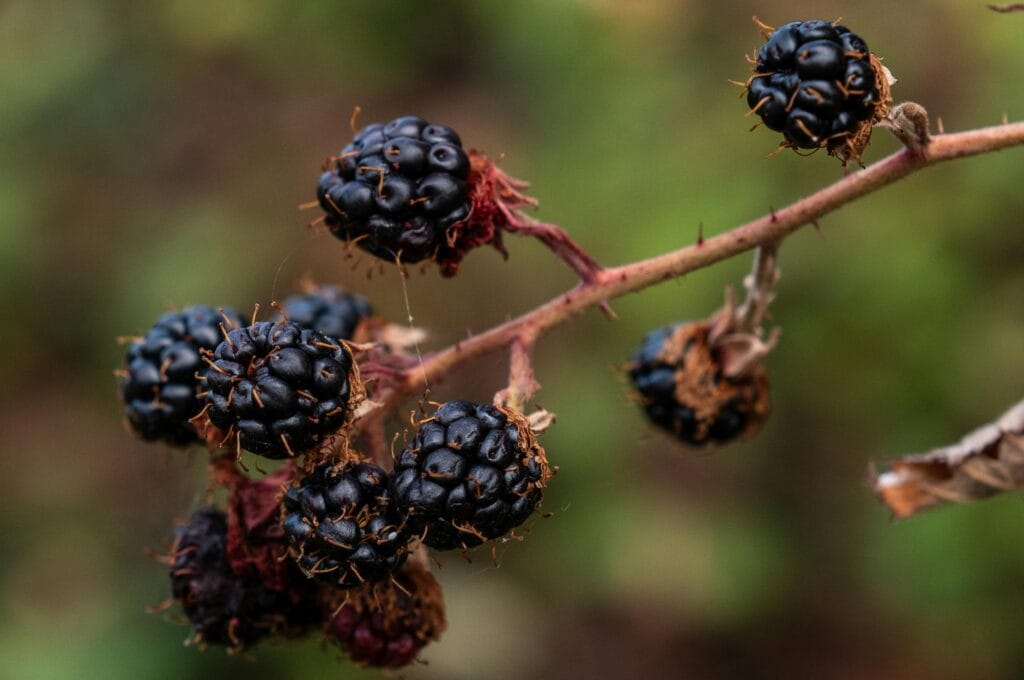
Allotment Health Check
August is the perfect time to take stock of how your plot is working. A simple walk around with a notebook can help you track:
Which crops thrived, and which struggled.
Where you experienced shade, drought, or pest problems.
Whether your layout, paths, or composting setup could be improved.
Prepare for Autumn
Beds will start to clear – time to prep for autumn sowing:
Remove spent crops (e.g., peas, onions, garlic).
Top-dress beds with compost or manure.
Sow green manures or cover with cardboard.
Clean tools and tidy sheds.
Planning garlic or overwintering onions? Use now to enrich and mark beds for autumn planting.
Raised bed kits make prep and crop rotation easier next season.
Quick Wins if You’re Short on Time (Under 10 mins)
Water only key crops deeply (squash, beans, tomatoes).
Sow spinach or lettuce trays at home.
Mulch any empty bed with grass clippings or compost.
Clear and compost yellowing plants.
Turn compost while your tea brews.
Pull bolting lettuce and sow spinach in its place.
Pick tomatoes and remove yellowing leaves.
Water containers.
Top up slug traps.
Sow a tray of salad indoors.
Common August Allotment Questions
Can I plant anything in August UK?
Yes – greens, turnips, radish, and green manures can all go in now. Ideal for a late flush of growth.
Is it too late to grow veg in August?
Not at all. Leafy veg, oriental greens, and overwintering cabbages love a late summer start.
What veg grows fast in August?
Radishes (4–6 weeks), lettuce (4–8 weeks), pak choi (40–50 days), and spinach if the weather cools.
When do I harvest onions and garlic?
Lift when the tops fall over and turn yellow. Let them dry fully before storing.
Do I need to feed plants in August?
Yes. Fruiting plants like tomatoes and squash benefit from fortnightly feeding.
What’s Next in September?
September brings colder nights, fewer daylight hours, and the start of autumn preparation in earnest. Expect:
Garlic and onion planting
Autumn salads
Compost turnouts
Clear-out of tomatoes and beans
We’ll publish the full September guide soon – keep your trug handy.
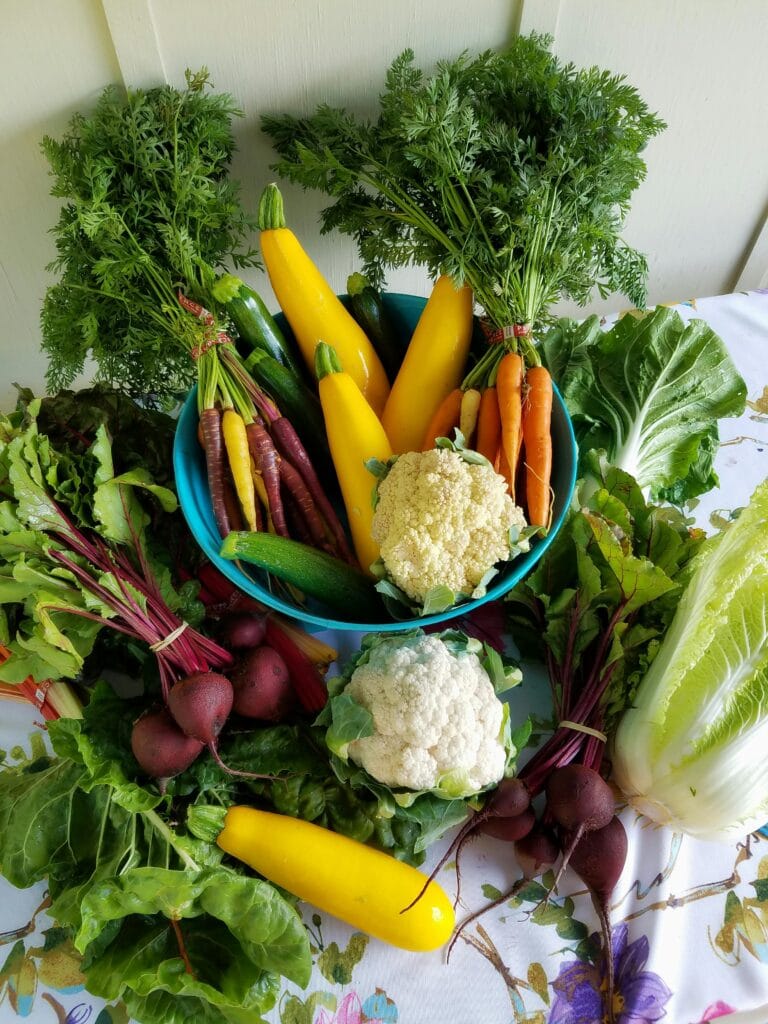
Conclusion
Ticking off your August allotment jobs early gives you momentum heading into autumn. It rewards the grower, but it also nudges you to prepare. By harvesting smart, sowing with the season, and keeping your plot ticking over, you’ll stay one step ahead.
Gardening is a seasonal rhythm – and August is the crescendo before the gentle drop of autumn. Lean into it. Celebrate the successes, tidy up the beds, and plant the future.
You don’t need perfection. Just progress.
Happy growing.
